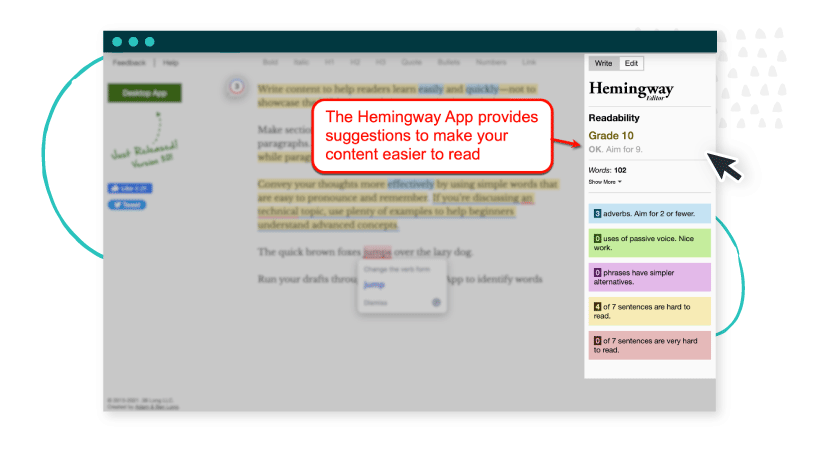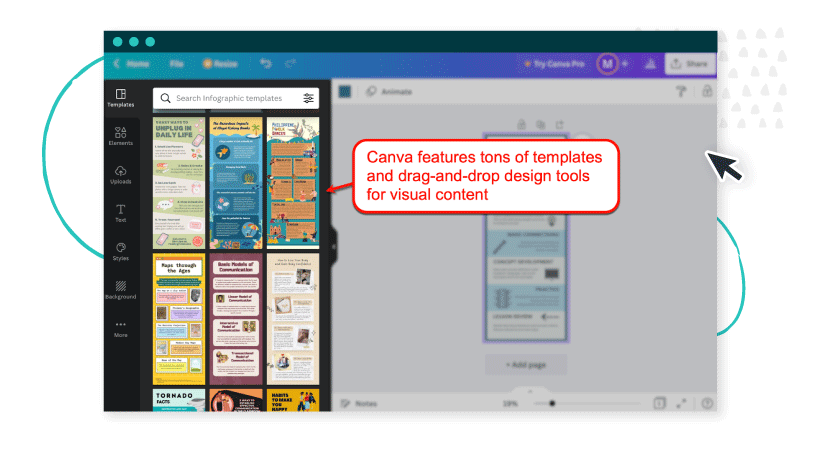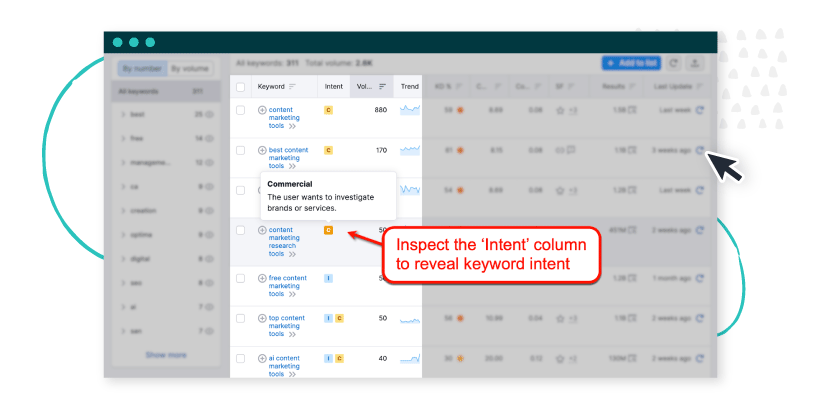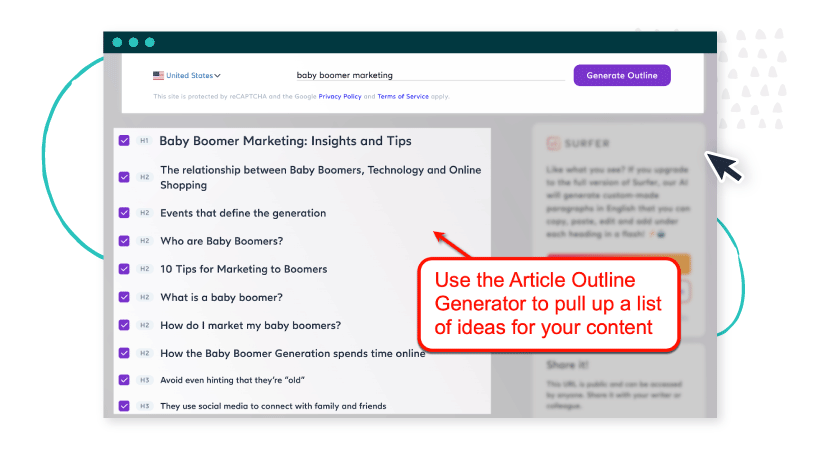Let’s face it: You need high-quality content.
Whether you’re looking to grow your sales, establish your authority, generate leads and sales, or if you just want to provide TONS of value to your readers, you need to push out high-quality content.
Sadly, marketers often have a fluid definition of high-quality content. Some say it’s perfect grammar. Others say it’s about having the most SEO-optimized content possible or about having it be 3,000 words in length.
This guide will show you exactly what high-quality content means, why it’s essential, and how to implement it for your marketing success.
Let’s get started.

What is high-quality content?
High-quality content provides immense value while giving readers a pleasant experience.
It effectively communicates and positions your brand as an industry expert and helps you achieve your company goals. (e.g., Revenue increase, follower growth, improved brand visibility, etc.)
Let’s further dissect the term “high-quality content.” Below are its seven characteristics.
- Helpful. Does the content help solve your reader’s problems? Does it make their lives better?
- Engaging. Great content keeps your target audience reading until the end. This requires a well-structured outline, smooth transitions, and visual breaks between walls of text (e.g., images, subheadings, tweetable quotes, etc.).
- Clear and actionable. People consume content for various reasons. Some are looking to be entertained, yet others want to solve their problems. Your content should have a clear set of action steps for users looking for a solution to a problem. It should be specific and actionable. Vague advice will only confuse your readers.
- Polished. Don’t break grammar rules without careful thought. In some cases, breaking minor grammar rules can make your content more engaging and cohesive.
- Upfront and honest. Does the content satisfy the audience’s expectations after reading the content headline? Ensure the questions they have upon reading your headline are answered.
- Updated. Great content is always relevant, which is why top-performing content marketers update their content with the latest stats and ideas. Ensuring your content is up-to-date also improves your search engine rankings.
- Aligned with your business goals. Does the content help accomplish your marketing goals? Even “entertainment” posts accomplish goals like boosting user engagement and raising brand awareness.
Why you need high-quality content
Here are the top reasons why every business needs to create content to grow online.
1. Build recurring traffic to your website. High-quality content tends to rank higher on search engines and should generate a steady stream of organic monthly traffic to your website.
2. Build buyer confidence. Content that demonstrates your first-hand expertise or experience on a topic can help win the target audience’s trust. It makes them more receptive to your offerings, be it a product, service, online course, etc.
3. Set yourself apart. Brilliant content helps you stand out in your niche and build a loyal audience base. Don’t expect to win over customers if you only publish generic content.
4. Establish your authority. Publish insightful content about important topics to establish yourself as an authoritative information source. Authoritative content also helps build relationships with influencers and potential partner brands, which leads to collaboration opportunities.
How to create high-quality content
1. Write for humans.
Prioritize your target audience’s needs before worrying about SEO.
Sure, high-quality content pieces may be influenced by SEO best practices. They may include lucrative target keywords or have an optimized internal link structure.
However, great content starts and ends with the reader.
It’s made to answer the intended audience’s questions. And by the end, readers should have enough information (and confidence) to take action.
Google recently rolled out the helpful content update, which rewards “people-first” content and penalizes content created primarily for SEO.
If you’re chasing after trending keywords, competitors, and new SEO “hacks,” it’s time to rethink your content strategy. People-first content focuses on the target audience’s goals and satisfaction.
SEO-first content focuses on keywords, word count, rankings, and other on-page optimization factors. Do your website (and audience) a favor and write for people first, search engines second.
2. Share information based on experience.
Here’s an example.
When writing a review, don’t just rehash feature descriptions and tips found on the product’s website. Use the product yourself and share your experience with readers who haven’t bought it yet.
If you’re writing a guide, don’t just describe the steps. Share helpful tips and shortcuts you can only find using the product.
This instills your content with a unique value, making readers come back for more.
3. Make your content easy to read.
Create high-quality content to help readers learn easily and quickly—not to showcase your vocabulary.
Make sections more digestible by writing short sentences and paragraphs.
As a rule of thumb, keep sentences below 20 words and paragraphs no more than five sentences each. This rule is made to be broken but try to follow it as much as possible—it improves your content’s readability.
Convey your thoughts more effectively with simple words that are easy to pronounce and remember.
When discussing a technical topic, use common examples to help beginners understand advanced concepts.
Run your drafts through the Hemingway App to identify words and sentences that can be simplified. The tool also grades your content’s readability level so you can tweak your draft accordingly.
Image Source: HemingwayApp.com
4. Go visual
Insert informative visuals like graphs, screenshots with annotations, photos, and even video clips whenever they’re needed. This increases the value and engagement factor of your content.
Research indicates that online readers are more focused when reading informative visuals than plain-text articles.
Users also perform 323% better when following instructions with visual aids.
Use tools like Snagit or Skitch to capture informative screenshots with annotations.
You can also use graphic design tools like Canva to create data-driven visuals like charts, lists, timelines, and full-on infographics.
Image Source: Canva.com
5. Match reader intent
Create high-quality content that matches the reader’s intent.
For example, keywords like “email marketing tool price” and “email marketing software discount” indicate strong purchase intent.
Match this intent with a buyer’s guide, comparison post, and other content types that help readers make a purchase decision.
On the other hand, queries that contain keywords like “how to” and “definition” are used by people who need information—not product promotion.
Match these queries with educational content without forcing readers to buy a product.
If the keyword’s intent is ambiguous, use tools like Semrush to clarify the intent. Look under the “Intent” column to identify whether the keyword is informational, transactional, commercial, or navigational.
Image Source: Semrush.com
Also, check the top 10 of the SERPs and align the intent of your content with what’s already ranking.
6. Comprehensive
Create comprehensive, high-quality content that won’t make readers feel like they need to read another post.
Scan the top 10 results for your primary keywords and look at the included sections. Ensure your post covers everything readers need to know about the topic.
To uncover relevant sections worth including in your content, use Surfer’s Article Outline Generator to generate a list of headings around your target keyword.
Image Source: SurferSEO.com
Frequently Asked Questions (FAQs)
What is the importance of high-quality content?
Great content helps generate high-quality organic traffic, turn users into leads, and convert leads into paying customers. Consistent content strategies also establish your brand’s credibility and expertise, making your target audience more likely to buy.
What are the 4 types of content metrics?
Content metrics can be categorized under consumption, sharing, lead generation, and sales. Track metrics that are relevant to your marketing goals to utilize content effectively.
How do you write high-quality content for SEO?
SEO best practices should still be used, but they shouldn’t be the priority in your content strategy.
Grow your business online with high-quality content
High-quality content can’t be achieved through AI writing tools or cheap content writing services.
You need a team of experienced, dedicated content professionals who understands your business and your target audience.
More importantly, they should be committed to producing expertly crafted, “people-first” content.
Creating top-notch content is what ClearVoice specializes in.
Chat with us today to discuss and build out a high-performing content marketing strategy for your business.










